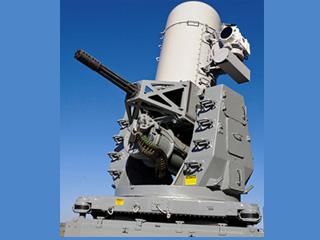
Phalanx Close-in Weapon System is integrated with the ship's combat system, providing fire control solutions for other weapons systems. Photo: Raytheon.
TUCSON, ARIZONA (BNS): The US Navy awarded Raytheon Company a USD 136.2 million contract for federal FY13 to remanufacture, overhaul and upgrade 19 Phalanx Close-in Weapon Systems and produce four SeaRAM Anti-ship Missile Defence Systems.
This contract includes a USD 94.8 million option for FY14 covering an additional 12 Phalanx and four SeaRAM systems. The option, if exercised, would bring the cumulative value of the contract to USD 231 million, according to a news release by the company.
"Phalanx is a vital ship self-defence system, providing the critical inner-layer of protection to sailors, Marines and ships," Rick Nelson, vice president of Raytheon Missile Systems' Naval and Area Mission Defence product line, was quoted as saying in the release.
"With SeaRAM comes a significant extension of that inner-layer battlespace and the capacity to effectively engage multiple high-performance threats. Raytheon's ability to remanufacture Phalanx equivalent to new manufacture condition - in appearance, operation and performance - provides a significant cost savings to our customers," he added.
Phalanx is a rapid-fire, computer-controlled radar and 20 mm gun system that automatically acquires, tracks and destroys enemy threats that have penetrated all other ship defence systems.
More than 890 systems have been built and deployed in the navies of 25 nations.
Intended to enlarge Phalanx's keep-out range against evolving anti-ship missiles, rotary- and fixed-wing aircraft and other threats, SeaRAM uses advanced Phalanx Block 1B sensors and replaces the gun with an 11-round Rolling Airframe Missile guide. SeaRAM is aboard the USS Independence (LCS 2) and USS Coronado (LCS 4).
 Previous Article
Previous Article Next Article
Next Article













The Indian Air Force, in its flight trials evaluation report submitted before the Defence Ministry l..
view articleAn insight into the Medium Multi-Role Combat Aircraft competition...
view articleSky enthusiasts can now spot the International Space Station (ISS) commanded by Indian-American astr..
view article